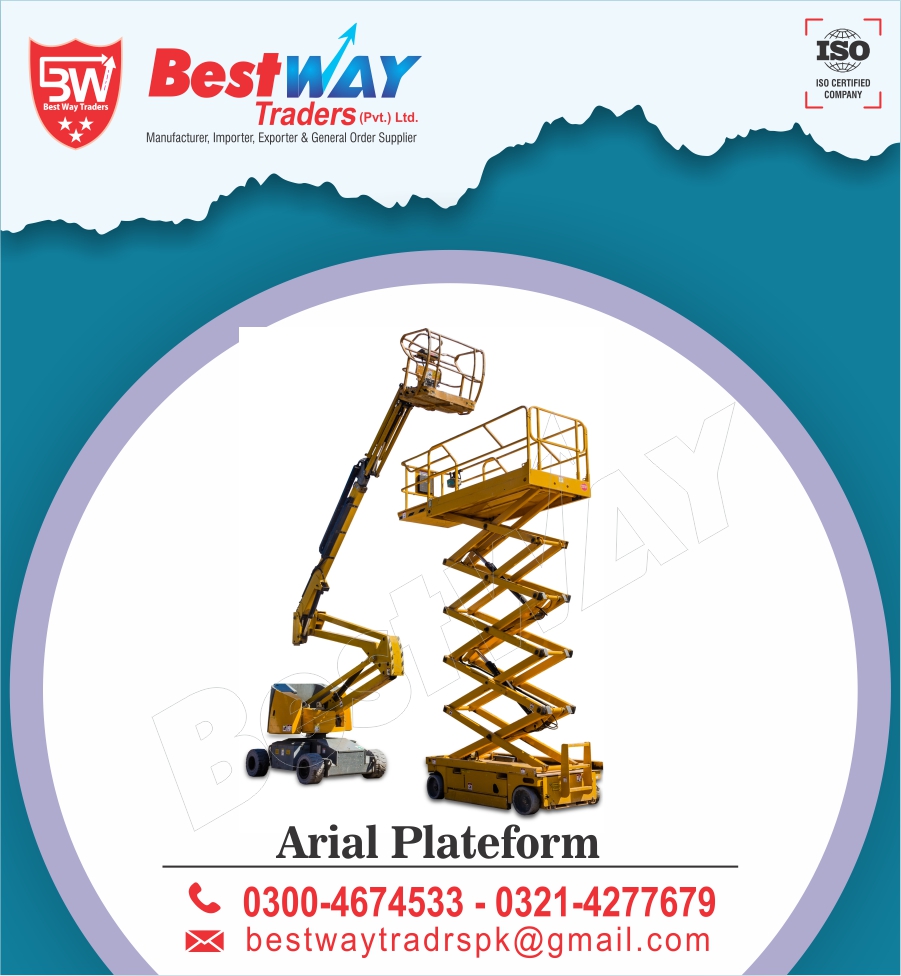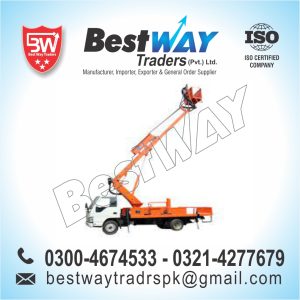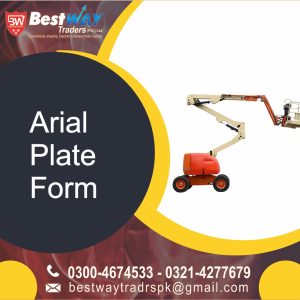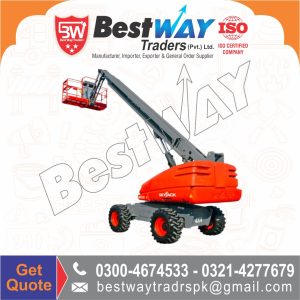Description
An aerial work platform (AWP), also known as an aerial device, elevating work platform (EWP), cherry picker, bucket truck or mobile elevating work platform (MEWP) is a mechanical device used to provide temporary access for people or equipment to inaccessible areas, usually at height. There are distinct types of mechanized access platforms and the individual types may also be known as a “cherry picker”, “boom lift” or “scissor lift”.
They are generally used for temporary, flexible access purposes such as maintenance and construction work or by firefighters for emergency access, which distinguishes them from permanent access equipment such as elevators. They are designed to lift limited weights — usually less than a ton, although some have a higher safe working load (SWL)[1] — distinguishing them from most types of cranes. They are usually capable of being set up and operated by a single person.
Regardless of the task they are used for, aerial work platforms may provide additional features beyond transport and access, including being equipped with electrical outlets or compressed air connectors for power tools. They may also be equipped with specialist equipment, such as carrying frames for window glass.[1] Underbridge units are also available to lift operators down to a work area.[2]
As the name suggests, cherry pickers were initially developed to facilitate the picking of cherries. Jay Eitel invented the device in 1944 after a frustrating day spent picking cherries using a ladder. He went on to launch the Telsta Corporation, Sunnyvale, CA in 1953 to manufacture the device.[3][4] Another early cherry picker manufacturer was Stemm Brothers, Leavenworth, WA.[5] Other uses for cherry pickers quickly evolved.[6]
here are several distinct types of aerial work platforms, which all have specific features which make them more or less desirable for different applications. The key difference is in the drive mechanism which propels the working platform to the desired location. Most are powered by either hydraulics or possibly pneumatics. The different techniques also reflect in the pricing and availability of each type.
Aerial device
Aerial devices were once exclusively operated by hydraulic pistons, powered by diesel or gasoline motors on the base unit. Lightweight electrically powered units are gaining popularity for window-cleaning or other maintenance operations, especially indoors and in isolated courtyards, where heavier hydraulic equipment cannot be used. Aerial devices are the closest in appearance to a crane – consisting of a number of jointed sections, which can be controlled to extend the lift in a number of different directions, which can often include “up and over” applications.
The most common type of aerial device are known in the AWP industry as knuckle boom lifts or articulated boom lifts, due to their distinctive shape, providing easy access to awkward high reach positions.
This type of AWP is the most likely of the types to be known as a “cherry picker“, owing to its origins, where it was designed for use in orchards (though not just cherry orchards). It lets the picker standing in the transport basket pick fruit high in a tree with relative ease (with the jointed design ensuring minimum damage to the tree). The term “cherry picker” has become generic, and is commonly used to describe articulated lifts (and more rarely all AWPs).
Another type of aerial device is a straight boom lift or telescopic boom lift, which as its name suggests has a boom that extends straight out for direct diagonal or vertical reach by the use of telescoping sections, letting you take full advantage of the boom length range.
Some AWPS are classified as spider lifts due to the appearance of their legs as they unfold, extend and stabilise, providing a wide supportive base to operate safely. These legs can be manual or hydraulic (usually depending on size and price of the machine).
AWPs are widely used for maintenance and construction of all types, including extensively in the power and telecommunications industries to service overhead lines, and in arboriculture to provide an independent work platform on difficult or dangerous trees. A specialist type of the articulated lift is the type of fire apparatus used by firefighters worldwide as a vehicle to provide high level or difficult access. These types of platforms often have additional features such as a piped water supply and water cannon to aid firefighters in their task.






Reviews
There are no reviews yet.